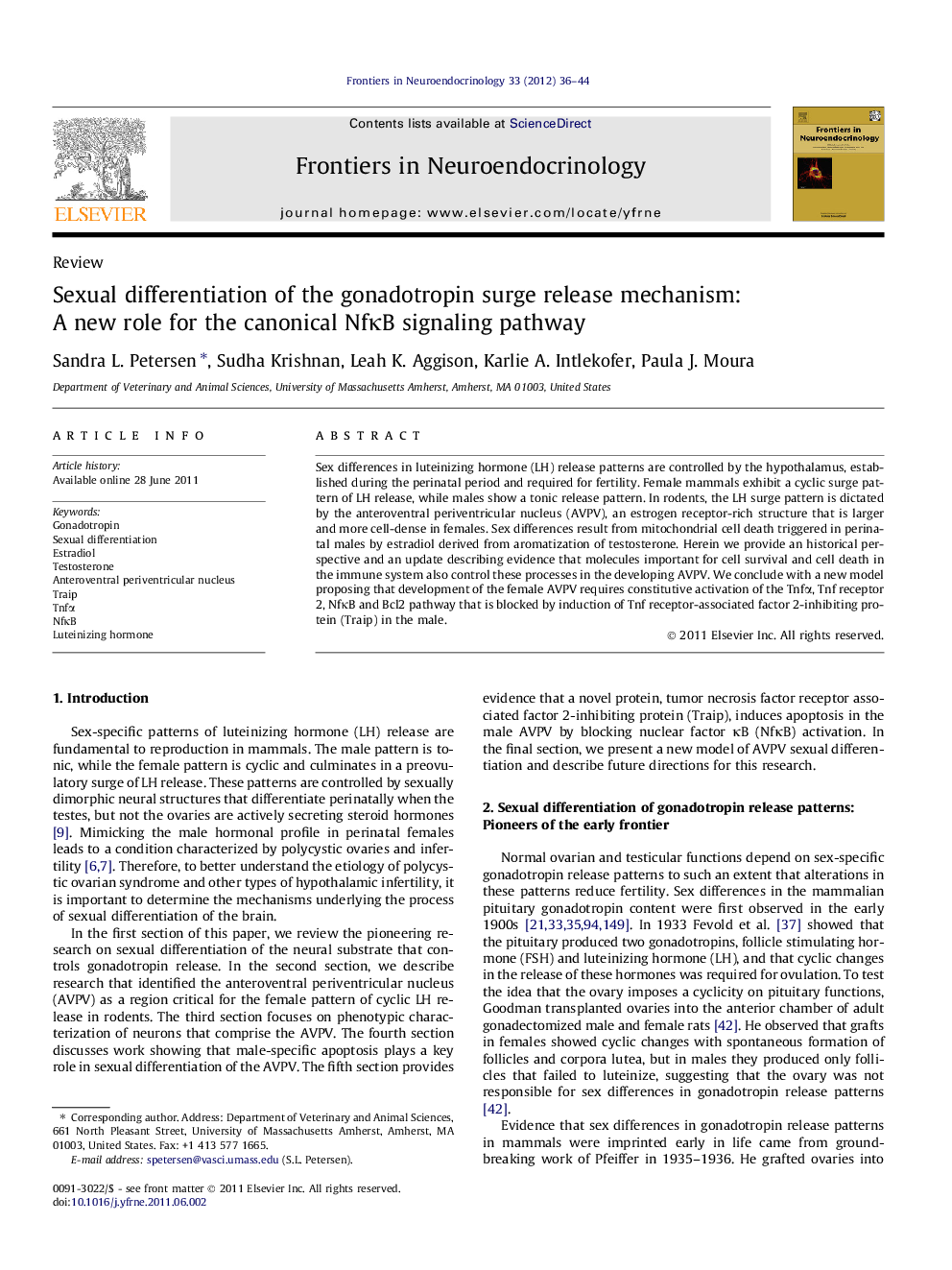| Article ID | Journal | Published Year | Pages | File Type |
|---|---|---|---|---|
| 5900707 | Frontiers in Neuroendocrinology | 2012 | 9 Pages |
Sex differences in luteinizing hormone (LH) release patterns are controlled by the hypothalamus, established during the perinatal period and required for fertility. Female mammals exhibit a cyclic surge pattern of LH release, while males show a tonic release pattern. In rodents, the LH surge pattern is dictated by the anteroventral periventricular nucleus (AVPV), an estrogen receptor-rich structure that is larger and more cell-dense in females. Sex differences result from mitochondrial cell death triggered in perinatal males by estradiol derived from aromatization of testosterone. Herein we provide an historical perspective and an update describing evidence that molecules important for cell survival and cell death in the immune system also control these processes in the developing AVPV. We conclude with a new model proposing that development of the female AVPV requires constitutive activation of the Tnfα, Tnf receptor 2, NfκB and Bcl2 pathway that is blocked by induction of Tnf receptor-associated factor 2-inhibiting protein (Traip) in the male.
Graphical abstractHypothesized role of the Tnfα-TnfR2-NfκB pathway in E2 control of sexual differentiation of the anteroventral periventricular (AVPV) nucleus.Download full-size imageHighlights⺠Sex-specific patterns of luteinizing hormone are critical for gonadal functions. ⺠The anteroventral periventricular (AVPV) nucleus dictates LH release patterns in rodents. ⺠The AVPV is smaller in males due to developmental cell death. ⺠Cell death is triggered by Traip repression of NfκB activation and Bcl2 induction.
